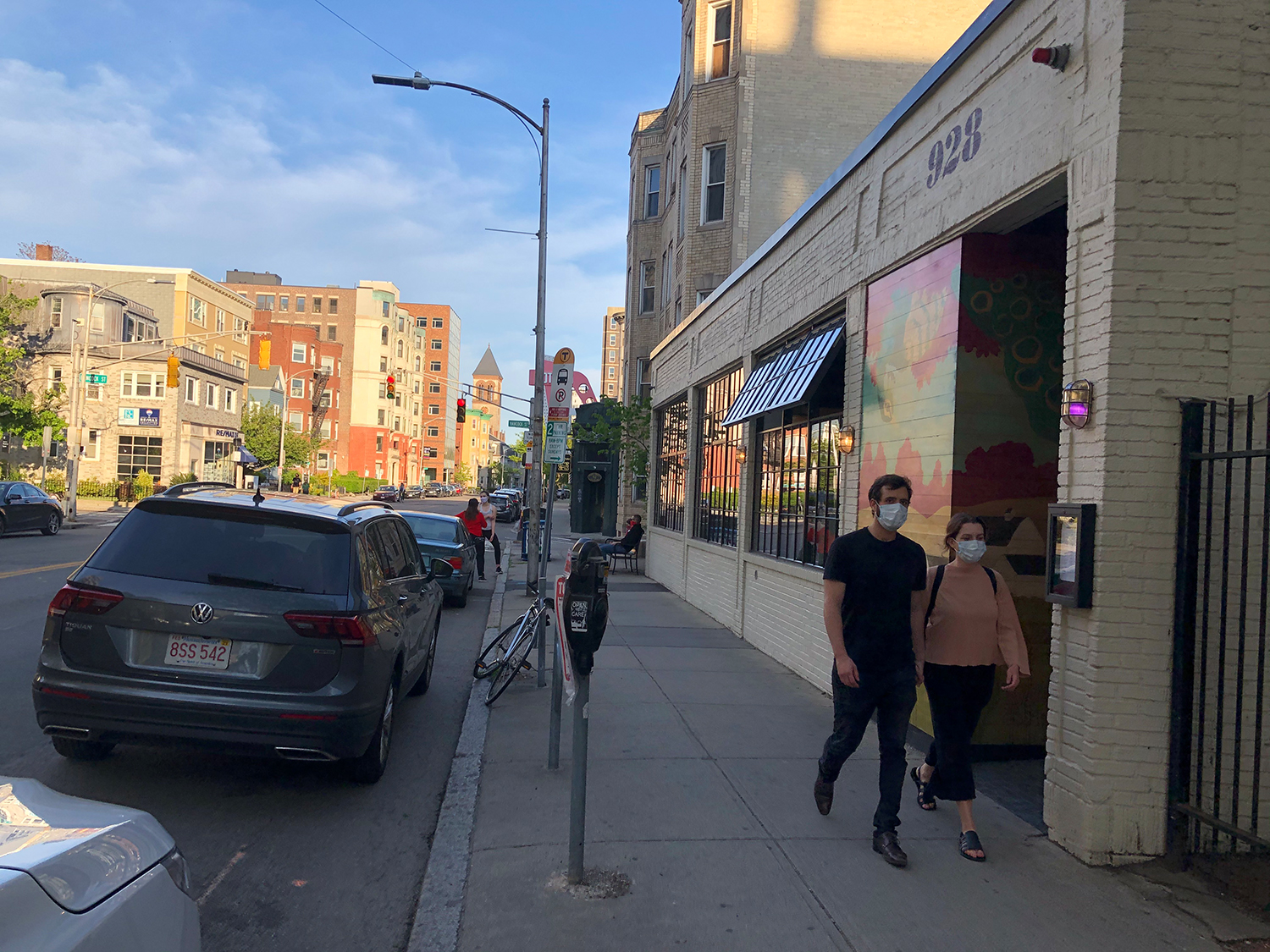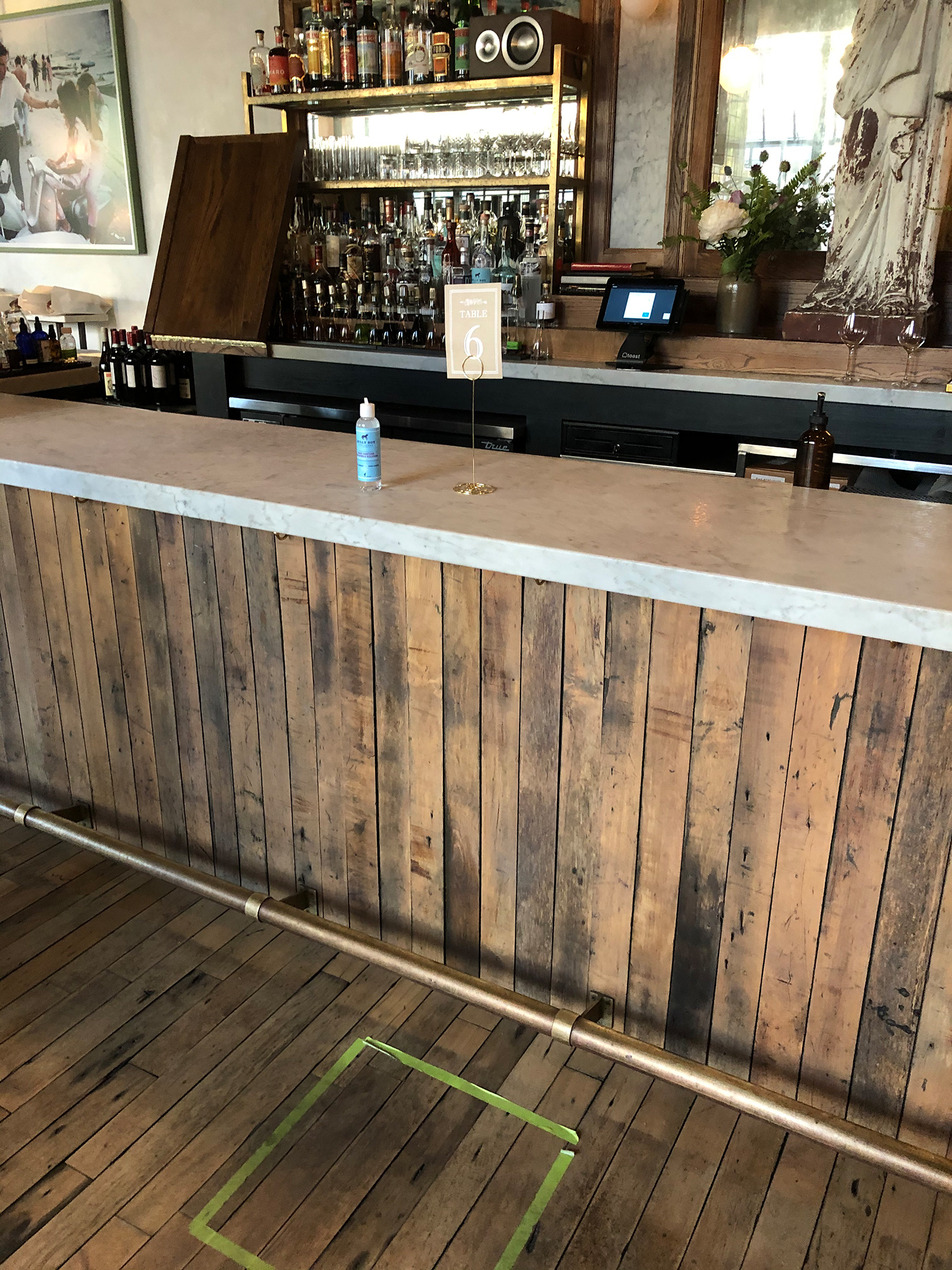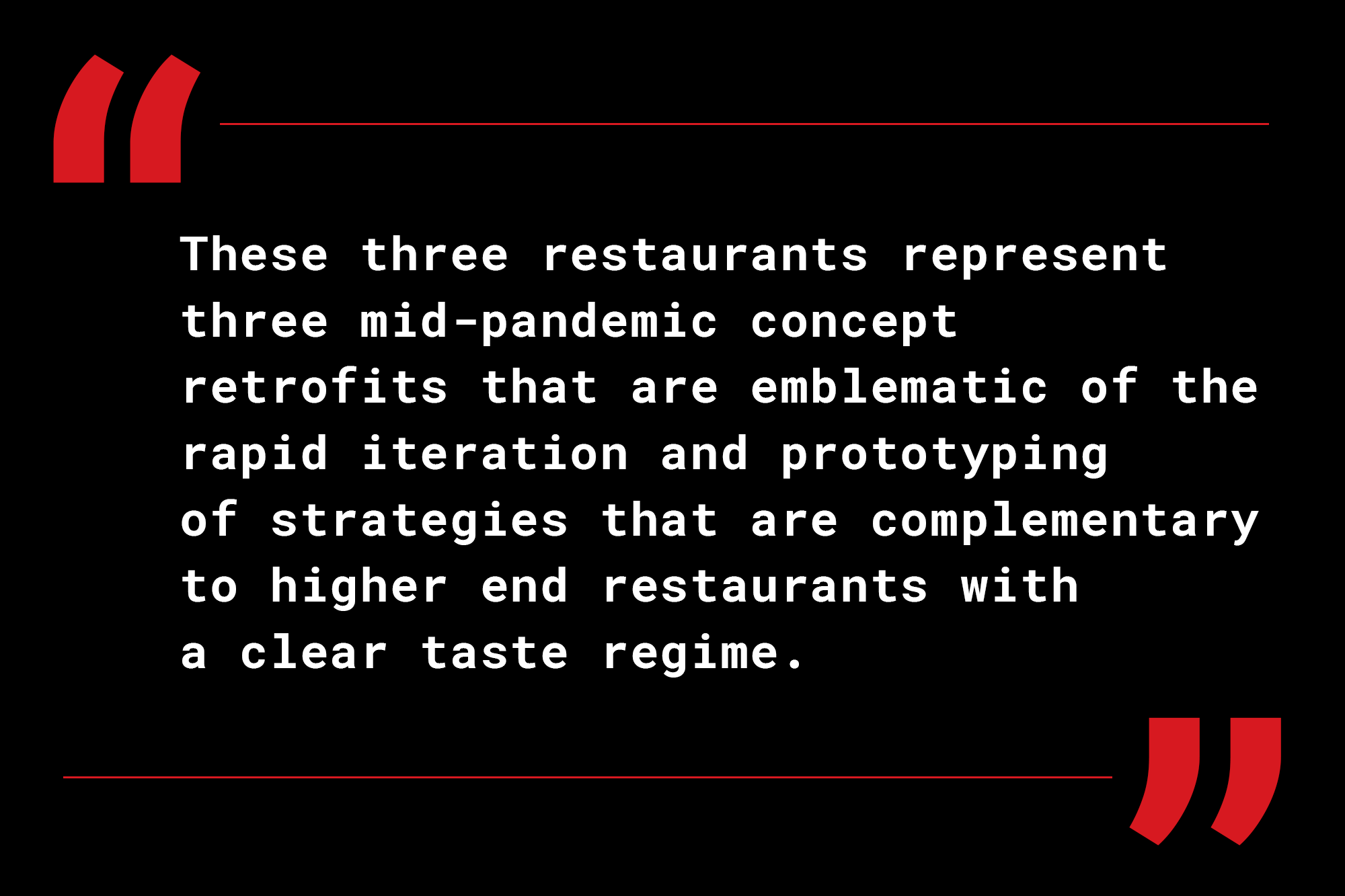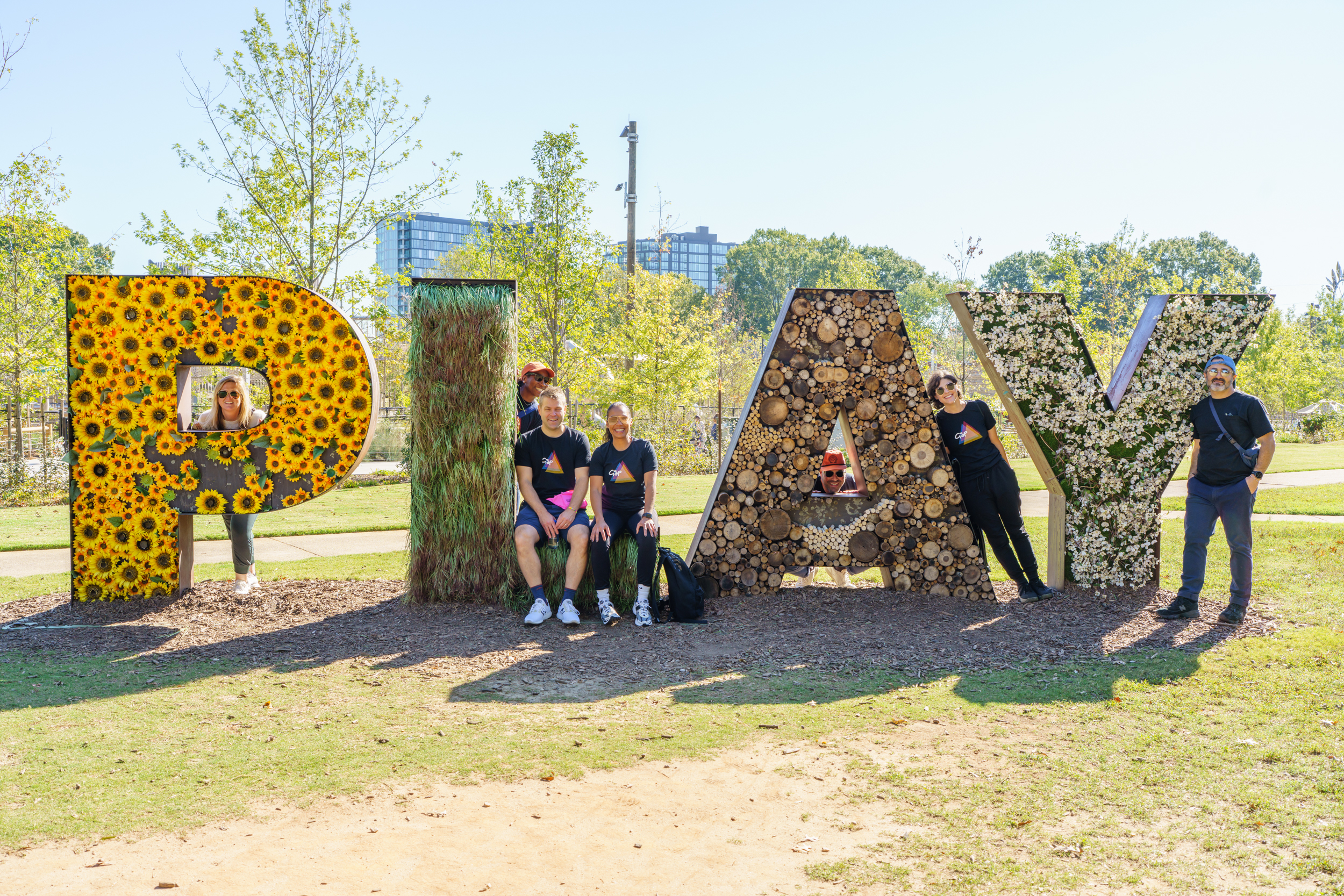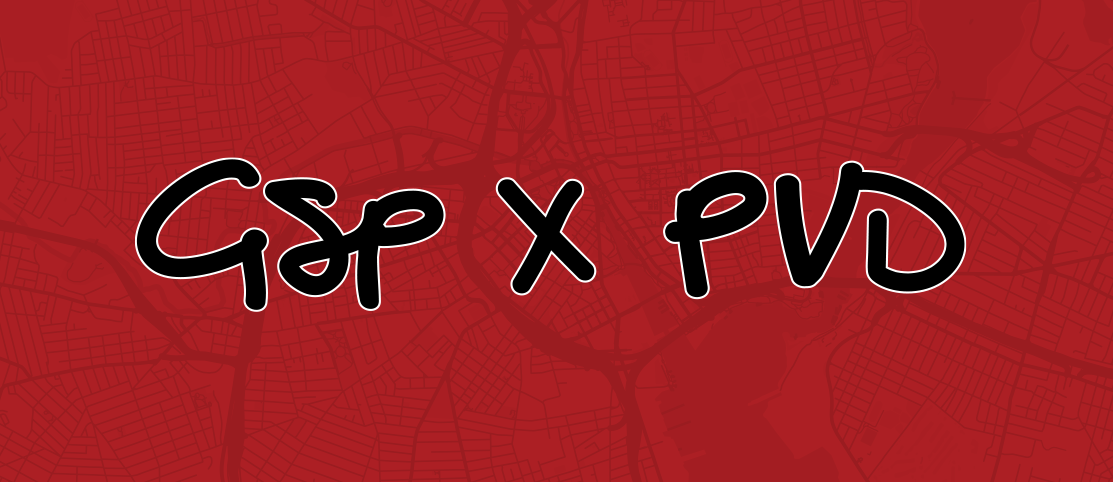Restaurant Retrofits Week 6: The Twofer, the Finish-at-Home Phenomenon, and the Aesthetic Refinement of Contactless Pickup
Two months into the pandemic, and it’s fair to say that the pickup experience has evolved. We’re also at the point where the novelty of getting takeout has worn off, people are antsy to get outside, and everyone’s more than a little anxious about what the future holds. It’s also fair to say that when it comes to takeout, particularly from finer dining establishments, people are expecting more. It’s not always clear what more precisely, but more. This week, I visited two restaurants I haven’t frequented since the pandemic began (Pagu and Pammy’s), and one repeat (Sarma), scheduled for the weekend. These three restaurants represent three mid-pandemic concept retrofits that are emblematic of the rapid iteration and prototyping of strategies that are complementary to higher end restaurants with a clear taste regime. Each is described below.
The Twofer
The Twofer describes restaurants who have, either out of necessity or creativity or both, decided to offer additional items besides food. The concept is food-plus. The most prevalent is the market concept, where restaurants work with their suppliers to offer grocery staples and other household items. Pagu exemplifies this restaurant-as-grocer concept, where they have created an auxiliary website (Pagu Market) which features beautiful food photography to entice shoppers to buy even the most mundane of items. It’s pretty much the best looking grocery list I have ever seen.
Their website explains it best: “The current pandemic has brought significant shortages to grocery stores. We have repackaged our restaurant supply chain so that you can access basic goods like butter, eggs, flour, and milk at affordable prices. Our team wear PPE and are trained in sorting and repackaging bulk food items directly from restaurant supplier warehouses. This allows customers to avoid the higher risk of COVID-19 exposure and the long lines that they would face at a grocery store. We are nimble. Our store is evolving, and we’ve added many new PAGU items.”
Mesmerized by the photos, I wound up ordering some staples that I legitimately needed (baking powder, eggs), and some things I definitely did not (thai basil pesto, miso sesame cookies). The upside of this is having ingredients to experiment with that are not something that you would find in a grocery store, and that last for days beyond the single meal. I’ve been slathering thai basil pesto on everything from sandwiches to grilled veggies. The cookies came with incredibly detailed instructions that appealed to my inner-OCD tendencies, and was subsequently super impressed with the textural and flavor complexities. I’ll also be eating these for days. My interest is now piqued to find out how these flavors and ingredients get deployed in a restaurant environment (which probably won’t be happening for awhile).


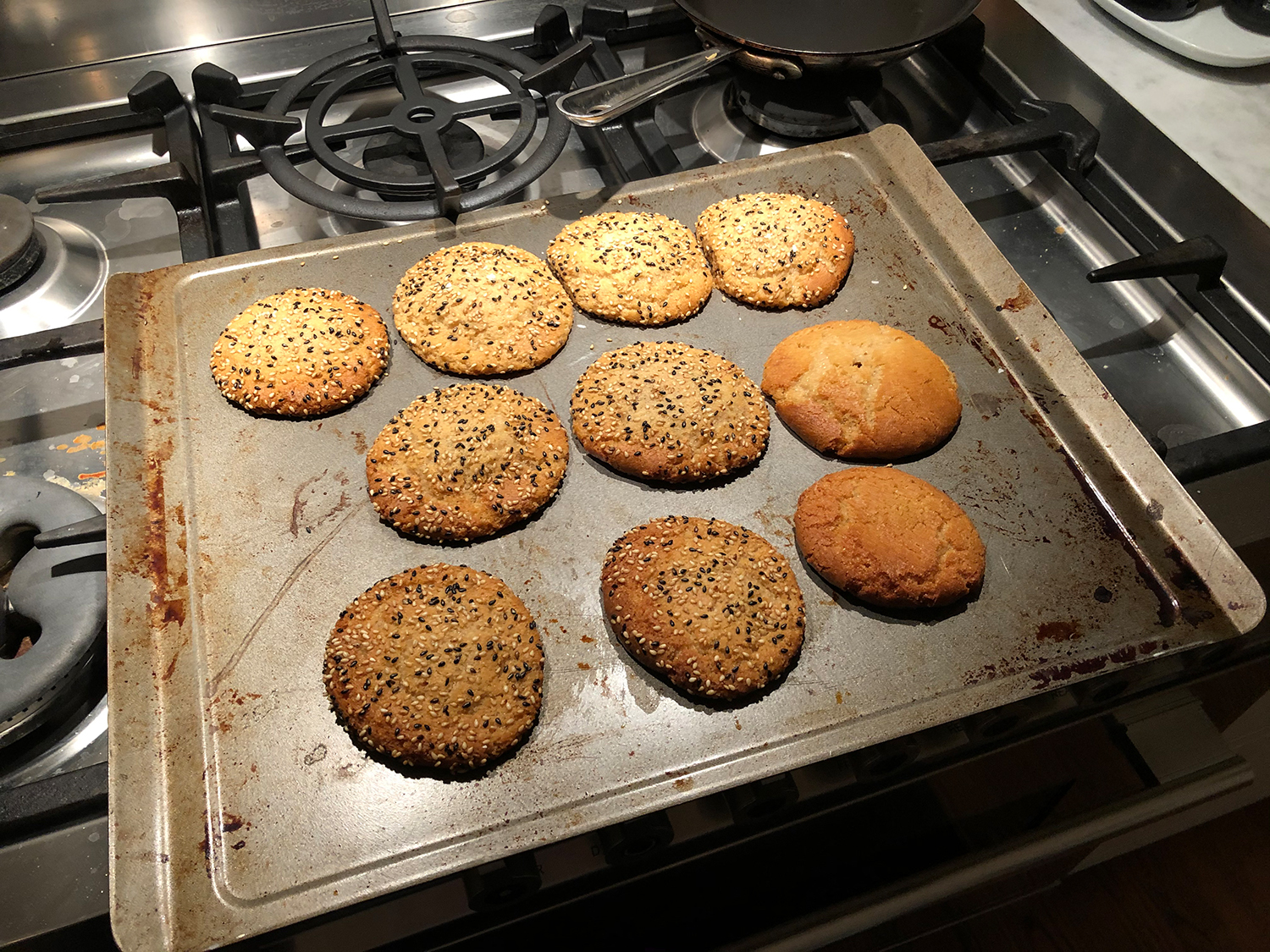
The Finish-at-Home Phenomenon
The second strategy is what I’m calling the Finish-at-Home Phenomenon. I’ve been seeing this from a lot of fine dining establishments where the type of food they serve doesn’t travel well and rather than risk sending out mediocre food, they’ve made the calculated risk to have folks finish the cooking at home. The chefs know it’s just not going to taste good unless it’s fresh. This strategy presupposes a clientele that is discerning and comfortable with this protocol, despite the obvious downside of getting takeout to avoid having to cook. Pagu and Sarma are both deploying this strategy in addition to regular fully-cooked takeout items. From Pagu, I ordered the Ramen survival kit. I had to cook the noodles, heat the broth, and assemble the ingredients. Though fairly straightforward, there weren’t instructions and I was still paranoid I wasn’t doing it correctly. From Sarma, I’ve ordered the Memorial Day Weekend BBQ box, which features exotic raw proteins to grill (lamb kofte, pineapple baharat steak tips, lebanese chicken wings) along with pre-made accompaniments that don’t require any effort. Given these are designed for the grill, I’m less self-conscious about messing it up. We’ll see.
The Aesthetic Refinement of Contactless Pickup
It’s taken me months, but I finally got takeout from Pammy’s. Pammy’s has in fact only been closed for one day since the pandemic began, but I imagine that the takeout experience on day one did not look the same as it did this week. This is the first place I’ve visited where I’ve been impressed by the quality of the experience; it was thoughtful, it was considered, it was designed. There was a discernible aesthetic in the execution of everything. From the waiting stations with the serif table numbers, the individual bottles of Bully Boy hand sanitizer, the instagram-ready bouquets of flowers for sale tempting one to purchase, and even the brown bags lined up against the front windows…everything looked lovely and refined. The 75 degree weather didn’t hurt. (One of the other customers waiting for his food announced he was taking the food directly outside for a picnic.) I don’t want to overly romanticize or glamorize an experience that is not economically sustainable or disavows our innate desire for communal dining, but this was actually pleasant.
Reflecting later, it strikes me that this last experience mirrors the explosion of mask designs. What began as a functional necessity with a very DIY-aesthetic has quickly become a niche accessory industry with all kinds of possibility for creative expression. And the small-batch Etsy seller is selling alongside the Athleta’s of the world, as well as everyone in between. We’re making fashion statements with our masks. Just because it’s necessary, doesn’t mean it can’t look good. Pammy’s has given me a taste (pun intended) of what a good, refined takeout experience looks like, and I’m now curious to return to other places to see how they’ve iterated on their own protocols and procedures. What began as a clunky and ad hoc experience has, in a span of just a couple months, already improved wildly. What this looks like a year from now? We’ll see…
